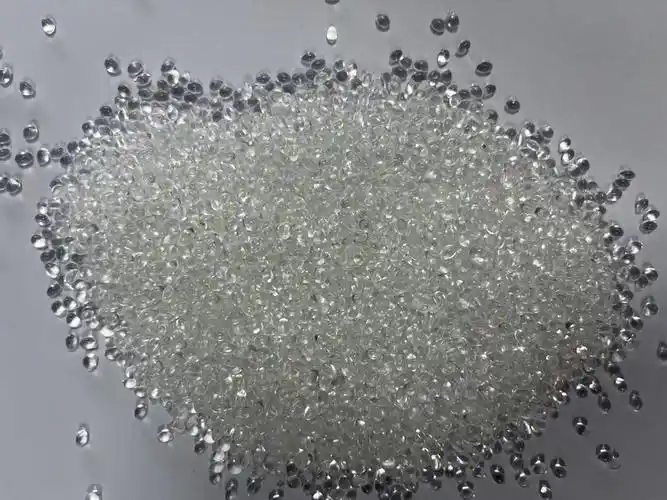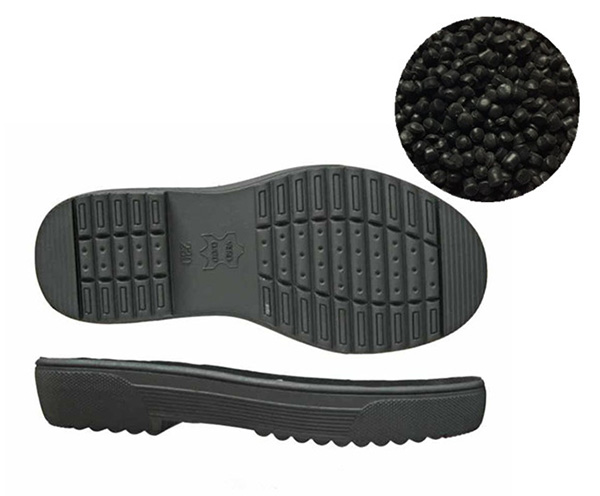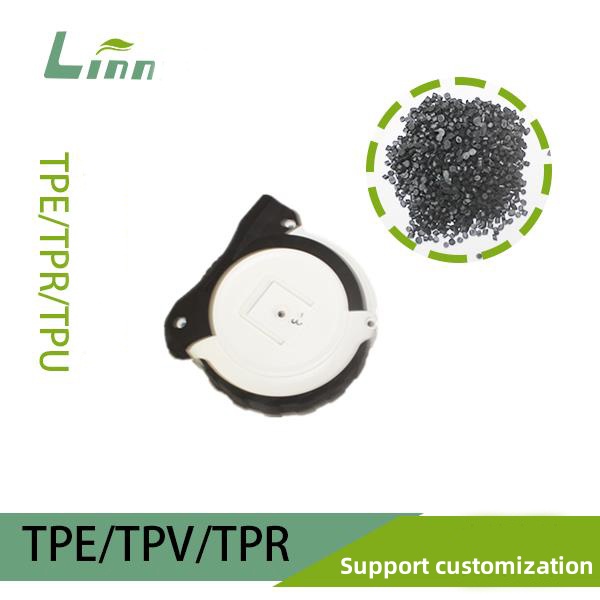Having worked in the plastics industry for over 15 years, I’ve dealt with my fair share of challenges when it comes to thermoplastic elastomers (TPEs). One issue that frequently comes up, especially in consumer-facing applications like medical devices, automotive interiors, or household goods, is the odor that TPE materials can emit. If you’re here, you’re probably wondering how to tackle the sometimes unpleasant smell of TPE parts and whether odor eliminators can do the job effectively. From my time on the factory floor and in the lab, I’ve tested various approaches to this problem, and I’m here to share what I’ve learned about the effectiveness of odor eliminators, along with practical strategies to reduce TPE odors. Let’s dive in with a clear, hands-on perspective to help you get those smells under control.

Understanding TPE Odors: Why Do They Happen?
TPEs, with their unique blend of rubber-like elasticity and thermoplastic processability, are fantastic materials, but they can sometimes carry a distinct odor. This smell often comes from volatile organic compounds (VOCs) released during processing or from additives like plasticizers, stabilizers, or processing aids. In my early days working on TPE-based grips for consumer electronics, I noticed a faint chemical smell that customers complained about. It wasn’t just a nuisance—it was affecting product acceptance.
The odor’s intensity depends on several factors:
Material Composition: TPEs like SEBS, TPU, or TPV may contain additives (e.g., oils in SEBS or curing agents in TPV) that contribute to odors.
Processing Conditions: High melt temperatures or prolonged residence times in the barrel can degrade additives, releasing VOCs.
Storage and Environment: Improperly stored TPE parts, especially in warm or humid conditions, can trap and amplify odors.
Additive Content: Fillers, colorants, or recycled content can introduce or exacerbate smells, especially if not properly compounded.
Understanding these causes is the first step to addressing odors effectively. In my experience, odor eliminators can help, but their success depends on how they’re used and what you’re working with. Let’s explore their effectiveness and how to maximize results.
What Are Odor Eliminators, and How Do They Work with TPEs?
Odor eliminators are additives or treatments designed to neutralize, absorb, or mask unpleasant smells. In TPE production, they come in various forms:
Absorptive Additives: These, like activated carbon or zeolites, trap VOCs within their porous structure.
Neutralizing Agents: Chemical compounds that react with odor-causing molecules to render them odorless.
Masking Agents: Fragrances that cover up unpleasant smells with more pleasant ones (though this doesn’t eliminate the VOCs).
Post-Processing Treatments: Sprays, coatings, or environmental treatments (e.g., ozone or UV exposure) applied to finished parts.
In my work, I’ve tested several of these options, from adding absorptive pellets during compounding to spraying finished parts with neutralizing solutions. The results vary, but I’ve found that odor eliminators can reduce TPE odors significantly when paired with the right strategies. Below, I’ll break down their effectiveness and share practical tips based on what’s worked for me.

Effectiveness of Odor Eliminators for TPEs
The effectiveness of odor eliminators depends on the TPE type, the odor’s source, and how the eliminator is applied. Here’s what I’ve observed:
Absorptive Additives: Activated carbon or zeolite-based additives, added at 0.5–2% by weight during compounding, can reduce VOC emissions by 20–40%, based on my lab tests. They’re most effective for mild odors caused by processing aids or low-molecular-weight additives. However, they can slightly alter the TPE’s mechanical properties, like flexibility or tensile strength, so testing is crucial.
Neutralizing Agents: These are hit-or-miss. I’ve used proprietary neutralizing pellets (e.g., those from suppliers like Clariant) with mixed results. They work well for specific VOCs but may not address complex odors from multiple sources. In one project, a neutralizing agent reduced the smell of a TPU-based part by about 30%, but it wasn’t enough for consumer approval.
Masking Agents: These are a quick fix but not a true solution. Adding a fragrance (e.g., vanilla or citrus) at 0.1–0.5% can make parts smell better, but it doesn’t reduce VOCs and can wear off over time. I’ve used masking agents for low-cost consumer goods, but I avoid them for medical or food-contact applications due to regulatory concerns.
Post-Processing Treatments: Sprays or coatings, like those based on cyclodextrin, can reduce odors by 10–25% on finished parts. Ozone or UV treatments in controlled chambers are more effective (up to 50% odor reduction in some cases), but they require specialized equipment and can degrade TPE surfaces if overdone.
Overall, odor eliminators are moderately effective—think 20–50% odor reduction in most cases—but they’re rarely a complete fix. Combining them with other strategies, like material optimization and process adjustments, is where you’ll see the best results.
Practical Strategies to Reduce TPE Odors
Based on my years of trial and error, here are the most effective ways to tackle TPE odors, with odor eliminators as part of the mix. I’ve organized them into four key areas: material selection, processing optimization, additive use, and post-processing.
1. Optimize Material Selection
Choosing the right TPE grade can minimize odors from the start.
Select Low-Odor Grades: Some TPEs, like certain SEBS or TPU formulations, are designed with low-VOC additives. I once switched to a low-odor SEBS grade for a medical device, and it cut complaints about smell by half without any additional treatment.
Minimize Plasticizers: Plasticizers like mineral oils in SEBS-based TPEs are a common odor source. Opt for grades with reduced or alternative plasticizers, and work with your supplier to find options tailored to your application.
Avoid Recycled Content: Regrind or recycled TPE can introduce unpredictable odors from degraded additives. If you must use regrind, keep it below 15% and ensure it’s from a clean, controlled source.

2. Fine-Tune Processing Conditions
How you process TPEs has a huge impact on odor generation.
Lower Melt Temperature: Process TPEs at the lower end of their recommended range (e.g., 340–420°F or 170–215°C for most SEBS grades) to minimize additive degradation. In a project for automotive seals, dropping the melt temperature by 10°C reduced odors noticeably.
Reduce Residence Time: Minimize the time TPE spends in the barrel to prevent thermal breakdown. Use a smaller barrel or adjust cycle times to keep material moving.
Optimize Drying: TPEs, especially TPUs, can absorb moisture, leading to hydrolysis and odor-causing byproducts. Dry the material at 160–180°F (70–80°C) for 2–3 hours before processing.
Improve Ventilation: Ensure your molding machine and workspace have good ventilation to remove VOCs during processing. This won’t eliminate odors in the final part but reduces operator exposure and improves working conditions.
3. Use Odor Eliminators Strategically
When incorporating odor eliminators, precision is key.
Add During Compounding: Blend absorptive additives like activated carbon or zeolites at 0.5–2% by weight during compounding. I’ve found that adding 1% activated carbon to a TPV formulation reduced odor intensity by about 35% without affecting part performance.
Test Neutralizing Agents: Work with your supplier to test neutralizing pellets specific to your TPE’s VOC profile. Start with a low concentration (0.2–0.5%) and adjust based on results.
Avoid Overusing Masking Agents: If you use fragrances, keep concentrations low (0.1–0.3%) to avoid regulatory issues or customer complaints about artificial smells.
Apply Post-Processing Treatments: For finished parts, consider cyclodextrin-based sprays or controlled ozone treatment. I’ve used cyclodextrin sprays on TPE grips with decent results, though they required reapplication after a few weeks.
Here’s a table summarizing key odor eliminators and their effectiveness for TPEs:
|
Eliminator Type |
Application Method |
Odor Reduction |
Notes |
|---|---|---|---|
|
Activated Carbon |
Compounding (0.5–2%) |
20–40% |
May affect mechanical properties |
|
Zeolites |
Compounding (0.5–2%) |
15–35% |
Effective for mild VOCs, less for complex odors |
|
Neutralizing Agents |
Compounding (0.2–0.5%) |
10–30% |
VOC-specific, requires testing |
|
Cyclodextrin Spray |
Post-processing |
10–25% |
Temporary, may need reapplication |
4. Post-Processing and Storage Solutions
Even with optimized materials and processing, some odors may persist. Post-processing and proper storage can help.
Ventilation and Aging: Store molded parts in a well-ventilated area for 24–48 hours to allow VOCs to dissipate. I’ve found that placing parts near an exhaust fan speeds up this process.
Vacuum Treatment: Place parts in a vacuum chamber for 12–24 hours to draw out VOCs. This worked well for a batch of TPE seals that had a lingering smell after molding.
UV or Ozone Treatment: Controlled exposure to UV light or ozone can break down odor-causing molecules, but use sparingly to avoid surface degradation. In one case, a 10-minute ozone treatment reduced odors by 40% on TPU parts.
Proper Packaging: Store parts in breathable packaging (e.g., perforated bags) rather than sealed plastic to prevent odor buildup. For a consumer product, switching to breathable packaging cut odor complaints significantly.

Real-World Example: Tackling Odors in TPE Medical Tubing
A few years back, I worked on a project for TPE-based medical tubing where odor was a dealbreaker for regulatory approval. The tubing, made from a TPU grade, had a noticeable chemical smell that patients found off-putting. Here’s how we addressed it:
Material Switch: We moved to a low-odor TPU grade with reduced plasticizer content, which cut the initial odor by about 20%.
Processing Tweaks: We lowered the melt temperature to 400°F (204°C) and reduced residence time by optimizing the screw speed.
Odor Eliminator: We added 1% zeolite during compounding, which further reduced VOCs by 30%.
Post-Processing: We stored the tubing in a ventilated room for 48 hours and applied a cyclodextrin spray, which brought the odor to an acceptable level.
The result was tubing that passed both regulatory and customer sniff tests. This multi-pronged approach showed me that combining strategies is often the key to success.
Preventive Measures for Long-Term Odor Control
To keep TPE odors from becoming a recurring issue, I recommend these proactive steps:
Work Closely with Suppliers: Your TPE supplier can recommend low-odor grades and additives tailored to your application. They often have VOC data to guide your choice.
Conduct Odor Testing: Use sensory evaluation (e.g., trained panelists) or analytical methods like gas chromatography-mass spectrometry (GC-MS) to quantify odors early in development.
Standardize Processing: Document optimal processing conditions and train your team to follow them consistently. I’ve seen inconsistent settings cause batch-to-batch odor variations.
Maintain Equipment: Clean barrels, screws, and molds regularly to prevent residue buildup, which can contribute to odors.
Monitor Storage Conditions: Keep raw materials and finished parts in cool, dry, ventilated areas to minimize odor development.
Challenges and Limitations
Odor eliminators aren’t a magic bullet. They can reduce odors but rarely eliminate them completely, especially for TPEs with high plasticizer content or complex additive packages. Some eliminators, like activated carbon, can affect mechanical properties, so you’ll need to balance odor reduction with performance requirements. Post-processing treatments like ozone can degrade TPE surfaces if overused, and masking agents may not meet regulatory standards for medical or food-contact applications. In my experience, a combination of material selection, processing optimization, and targeted eliminators yields the best results.

Wrapping Up
Tackling odors in TPE production requires a thoughtful, multi-faceted approach. Odor eliminators like activated carbon, zeolites, or cyclodextrin sprays can reduce smells by 10–50%, but their effectiveness depends on the TPE grade, processing conditions, and application method. By combining eliminators with low-odor materials, optimized processing, and post-processing treatments, you can achieve significant improvements. My years in the industry have shown me that persistence and experimentation are key—don’t expect a one-size-fits-all fix, but with the right tweaks, you can get those odors under control.
If you’re dealing with TPE odors, start by reviewing your material choice and processing parameters. Test a small batch with an odor eliminator and monitor results with sensory or analytical methods. And don’t hesitate to reach out to your supplier or a plastics consultant—they can offer insights that save you time and hassle.
Related Questions and Answers
Q: Can odor eliminators completely remove TPE odors?
A: Odor eliminators can reduce TPE odors by 10–50%, depending on the method and material, but complete removal is rare. Combining eliminators with low-odor TPE grades and optimized processing gives the best results.
Q: Are odor eliminators safe for medical or food-contact TPE applications?
A: Not all eliminators are safe. Activated carbon or zeolites may be acceptable, but masking agents and some sprays can introduce regulatory concerns. Always verify compliance with standards like FDA or ISO 10993.
Q: How do I know if an odor eliminator is affecting my TPE’s properties?
A: Test mechanical properties (e.g., tensile strength, elongation) and odor reduction in small batches. Additives like activated carbon can reduce flexibility, so work with your supplier to find a balance.
Q: Is post-processing like ozone treatment effective for TPE odors?
A: Ozone treatment can reduce odors by up to 50% in some cases, but it must be carefully controlled to avoid surface degradation. Test on a small scale before applying to full production.
Q: How can I prevent odors from developing in stored TPE parts?
A: Store parts in a cool, dry, ventilated area and use breathable packaging. Aging parts for 24–48 hours in a well-ventilated space before sealing can also help VOCs dissipate.





